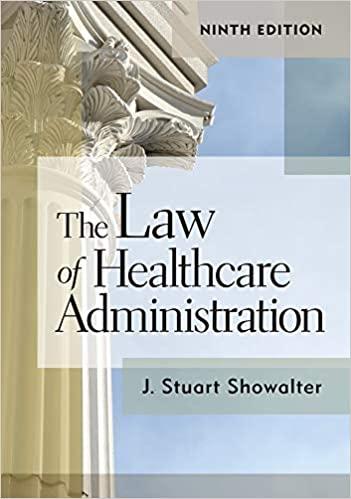This medical malpractice case involves two issues: first, whether there was sufficient evidence of negligence in the
Question:
This medical malpractice case involves two issues: first, whether there was sufficient evidence of negligence in the performing of surgery to sustain a jury verdict for plaintiff;
second, whether, under plaintiff’s alternative theory, the instructions to the jury adequately set forth the nature of a medical doctor’s duty to obtain the informed consent of a patient before undertaking treatment. We conclude there was insufficient evidence to support the jury’s verdict under the theory that the defendant was negligent during the operation.
Since there was a general verdict and we are unable to ascertain upon which of the two concepts the jury relied, we must reverse the judgment and remand for a new trial. To assist the trial court upon remand we analyze the doctor’s duty to obtain the patient’s informed consent and suggest principles for guidance in drafting new instructions on this question.
Plaintiff was admitted to the hospital in August 1964 for treatment of a duodenal ulcer. He was given a series of tests to ascertain the severity of his condition and, though administered medication to ease his discomfort, he continued to complain of lower abdominal pain and nausea. His family physician, Dr. Jerome Sands, concluding that surgery was indicated, discussed prospective surgery with plaintiff and advised him in general terms of the risks of undergoing a general anesthetic. Dr. Sands called in defendant, Dr. Dudley F. P. Grant, a surgeon, who after examining plaintiff, agreed with Dr. Sands that plaintiff had an intractable peptic duodenal ulcer and that surgery was indicated. Although Dr. Grant explained the nature of the operation to plaintiff, he did not discuss any of the inherent risks of the surgery.
A two-hour operation was performed the next day, in the course of which the presence of a small ulcer was confirmed. Following the surgery the ulcer disappeared. Plaintiff’s recovery appeared to be uneventful, and he was permitted to go home eight days later.
However, the day after he returned home, plaintiff began to experience intense pain in his abdomen. He immediately called Dr.
Sands who advised him to return to the hospital.
Two hours after his readmission plaintiff went into shock and emergency surgery was performed. It was discovered plaintiff was bleeding internally as a result of a severed artery at the hilum of his spleen. Because of the seriousness of the hemorrhaging and since the spleen of an adult may be removed without adverse effects, defendant decided to remove the spleen. Injuries to the spleen that compel a subsequent operation are a risk inherent in the type of surgery performed on plaintiff and occur in approximately 5 percent of such operations...........
Discussion Questions
a. How do you suppose the physician community reacted to this decision?
b. How would you explain the decision to someone who disagrees with it?
c. Is it fair for Dr. Grant to be held to a standard of care that did not exist at the time of Cobbs’s treatment?
d. Can you explain why the reasonable-patient test is called “objective” while testimony from the patient on the question of causation is considered unreliable?
e. The court said there was not enough evidence to support a verdict of negligence, yet the original gastrectomy led to multiple hospital stays and two follow-up surgeries. These complications were known risks that can occur even if the surgeon performs the operation flawlessly. If you were the patient and knew about these risks, would you decide to consent to the first surgery? What factors would you consider?
Step by Step Answer:






